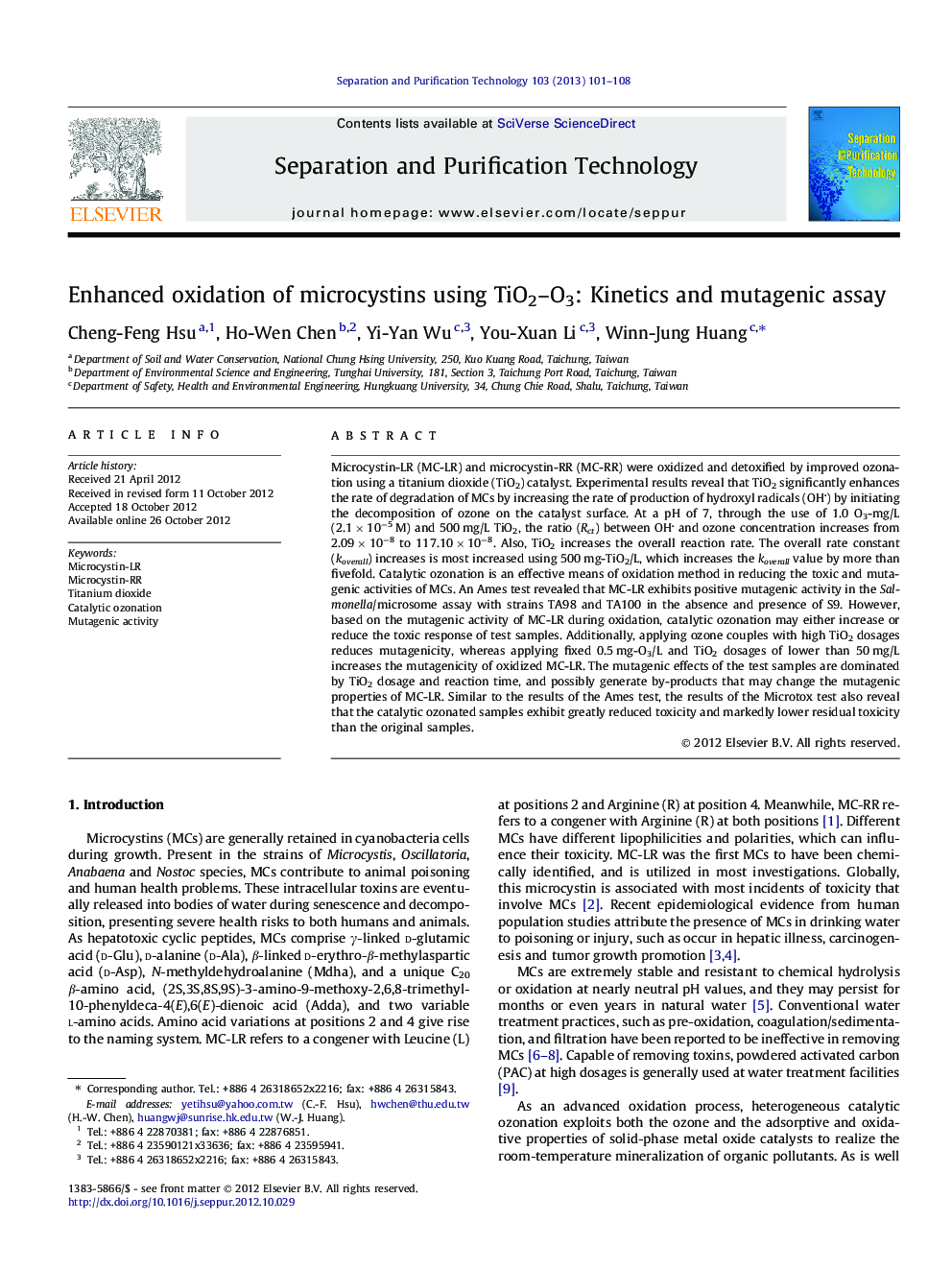| کد مقاله | کد نشریه | سال انتشار | مقاله انگلیسی | نسخه تمام متن |
|---|---|---|---|---|
| 641921 | 1457016 | 2013 | 8 صفحه PDF | دانلود رایگان |

Microcystin-LR (MC-LR) and microcystin-RR (MC-RR) were oxidized and detoxified by improved ozonation using a titanium dioxide (TiO2) catalyst. Experimental results reveal that TiO2 significantly enhances the rate of degradation of MCs by increasing the rate of production of hydroxyl radicals (OH) by initiating the decomposition of ozone on the catalyst surface. At a pH of 7, through the use of 1.0 O3-mg/L (2.1 × 10−5 M) and 500 mg/L TiO2, the ratio (Rct) between OH and ozone concentration increases from 2.09 × 10−8 to 117.10 × 10−8. Also, TiO2 increases the overall reaction rate. The overall rate constant (koverall) increases is most increased using 500 mg-TiO2/L, which increases the koverall value by more than fivefold. Catalytic ozonation is an effective means of oxidation method in reducing the toxic and mutagenic activities of MCs. An Ames test revealed that MC-LR exhibits positive mutagenic activity in the Salmonella/microsome assay with strains TA98 and TA100 in the absence and presence of S9. However, based on the mutagenic activity of MC-LR during oxidation, catalytic ozonation may either increase or reduce the toxic response of test samples. Additionally, applying ozone couples with high TiO2 dosages reduces mutagenicity, whereas applying fixed 0.5 mg-O3/L and TiO2 dosages of lower than 50 mg/L increases the mutagenicity of oxidized MC-LR. The mutagenic effects of the test samples are dominated by TiO2 dosage and reaction time, and possibly generate by-products that may change the mutagenic properties of MC-LR. Similar to the results of the Ames test, the results of the Microtox test also reveal that the catalytic ozonated samples exhibit greatly reduced toxicity and markedly lower residual toxicity than the original samples.
► TiO2 enhances the degradation of microcystins by increasing the hydroxyl radicals.
► Catalytic ozonation significantly decrease the toxic potential of microcystins.
► Catalytic ozonation between ozone and toxin can be modeled as second-order model.
► The by-products must be assessed in degradation toxicity of microcystins.
Journal: Separation and Purification Technology - Volume 103, 15 January 2013, Pages 101–108